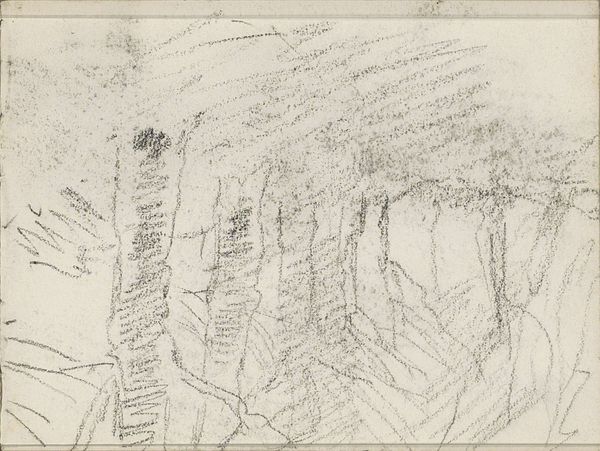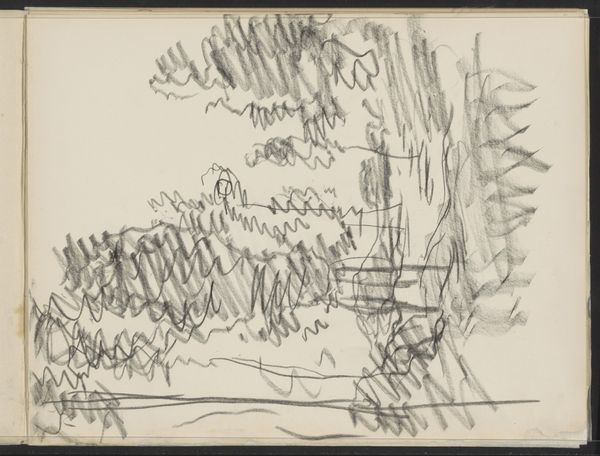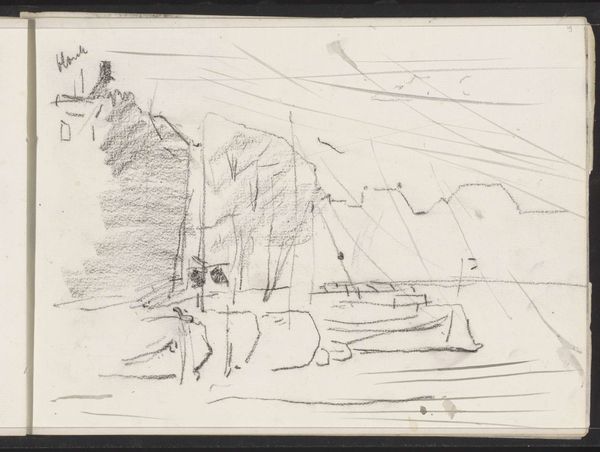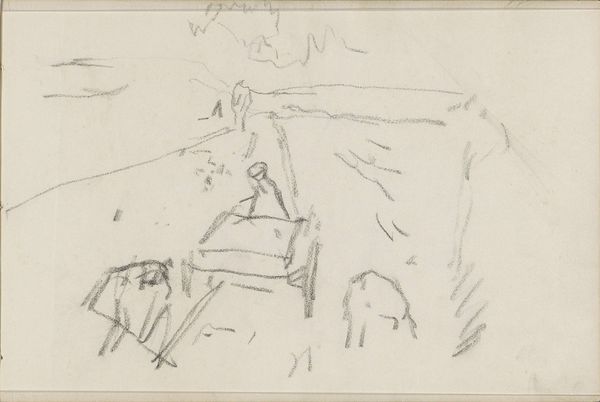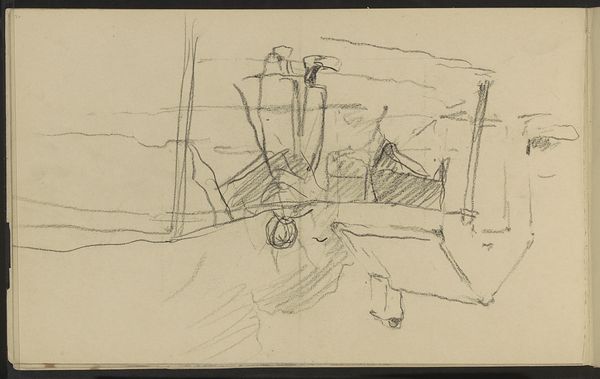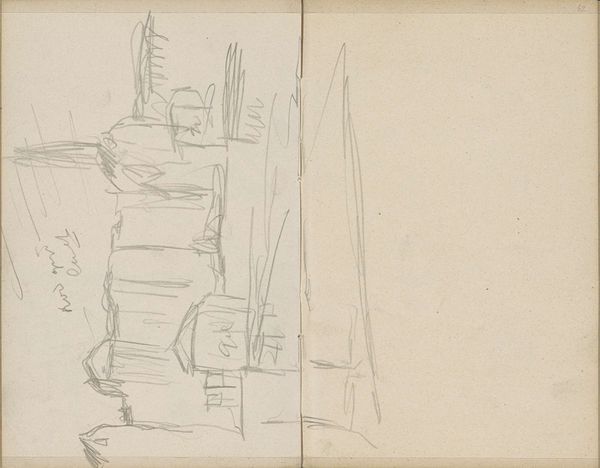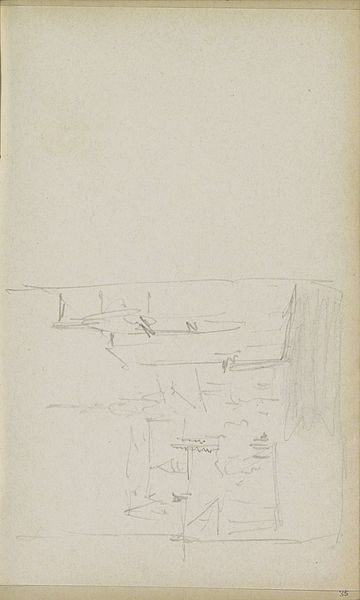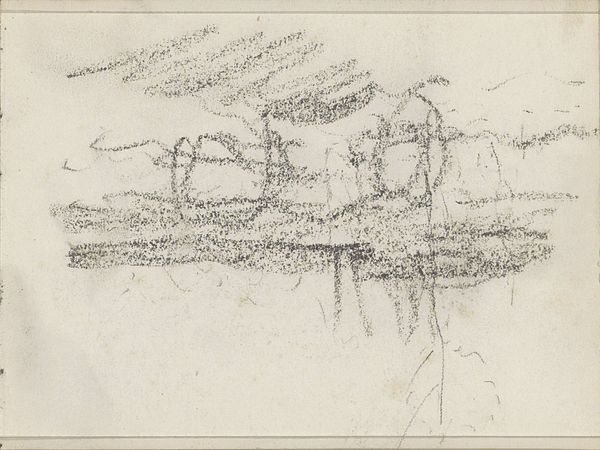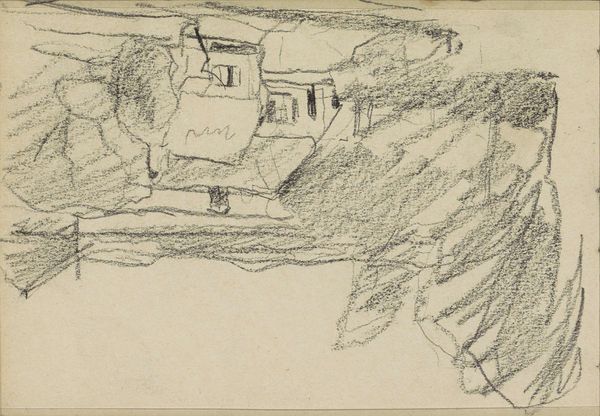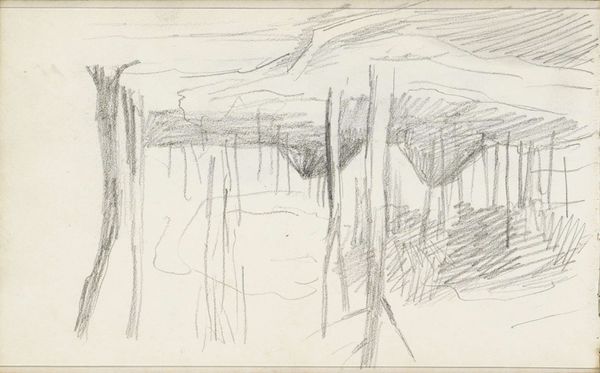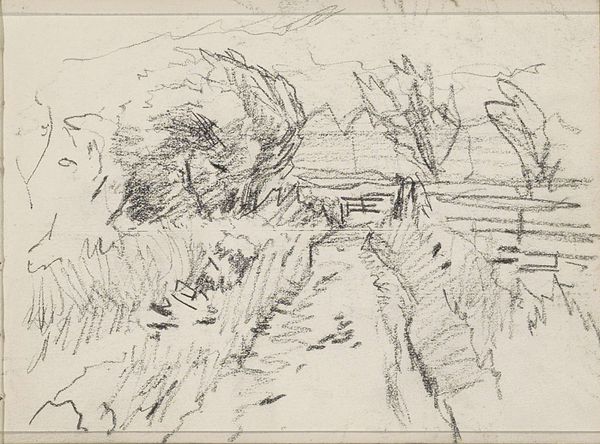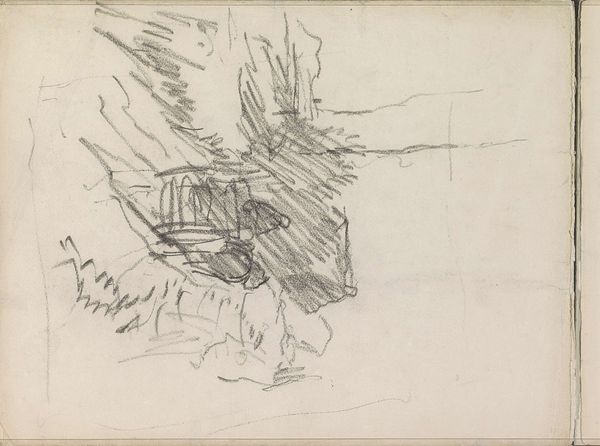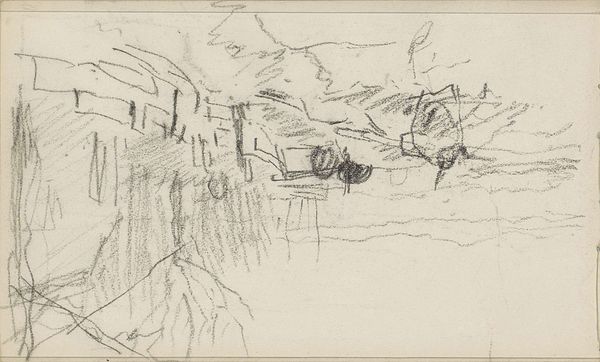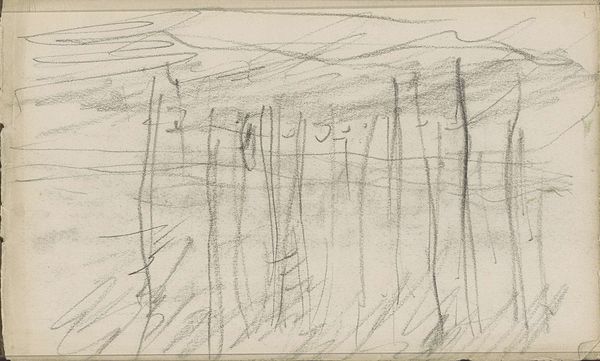
drawing, pencil
#
drawing
#
dutch-golden-age
#
landscape
#
pencil
#
realism
Copyright: Rijks Museum: Open Domain
Curator: Looking at this sketch, “Woodcutters near a Row of Trees”, dating roughly from 1848 to 1888 and held here at the Rijksmuseum, what strikes you first, Editor? Editor: The roughness! It’s such a direct, almost brutal representation. You feel the physical labor even in the simplicity of the pencil strokes. It emphasizes the labor involved in timber extraction—the axes, the raw trees themselves, and the anonymous figures obscured within them. Curator: Indeed. It’s a pencil drawing by Anton Mauve. It demonstrates an element of Realism with Landscape elements. Mauve, of course, occupied an important place in the artistic landscape of the Netherlands, bridging the gap between the Hague School and early modernism. How do you see this sketch fitting into that narrative? Editor: This piece reveals the mechanics of landscape painting. Consider the social implication. Timber would have provided fuel and construction material during the period, therefore connecting to everyday material life. The stark rendering contrasts with the often idealized landscape paintings of the era. There’s an acknowledgment of human interaction, nearly struggle, with nature to produce goods. Curator: Exactly. The focus shifts from aesthetic beauty to production. The speed of production for something that still renders with good accuracy is amazing here. These drawings enabled more comprehensive studio pictures through increased visual references. Editor: The almost mechanical depiction hints to emerging industrial views where resources were needed for more construction, therefore pushing against the art institutions where pretty pictures would be better accepted. Curator: A critical tension made visible through a seemingly simple sketch. A lot of these kinds of studies weren’t seen as being proper works of art, yet Mauve saw them as valuable in building out his paintings. Editor: Absolutely, its roughness is less of an artistic or institutional failure but an acknowledgement of how raw materials can be changed through intense labor for consumption and utility. Curator: That emphasis makes this far more radical than it might appear at first glance. A potent testament to the unseen efforts behind seemingly picturesque scenes. Editor: Agreed. This really causes a perspective shift on art’s role and relationship to both production and natural landscapes.
Comments
No comments
Be the first to comment and join the conversation on the ultimate creative platform.
